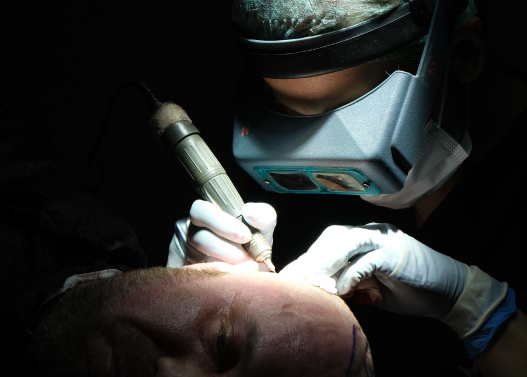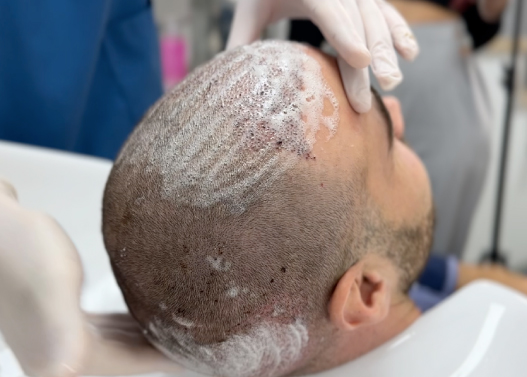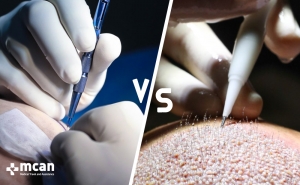Anesthesia
The FUE procedure begins with local anesthesia to numb both the donor and recipient areas, allowing for a comfortable and pain-free experience throughout the extraction and implantation phases.
Donor Area Preparation
In FUE Hair Transplantation, the donor area, typically at the back or sides of the scalp, is trimmed to allow clear visibility and precise access for follicle extraction without damaging surrounding tissue.
Follicle Extraction
Using FUE-specific micro-punch tools, individual hair follicles are carefully extracted one by one. This minimally invasive technique preserves the structure of each follicle, increasing their survival rate and optimizing results.
Recipient Area Preparation
The recipient area is prepared using FUE-compatible micro-incisions, strategically placed to match the natural angle, depth, and growth direction of your existing hair. This step is essential for creating a natural appearance.
Follicle Implantation
In the FUE implantation phase, the harvested follicles are delicately placed into the prepared incisions. Each follicle is aligned precisely to blend naturally with surrounding hair, ensuring even density and a realistic outcome.
Post-Procedure Cleaning and Dressing
After the FUE process is complete, the donor and recipient areas are carefully cleaned and dressed to protect the newly implanted follicles. Detailed aftercare guidelines are provided to support healing and maximize the success of the transplanted grafts.














































